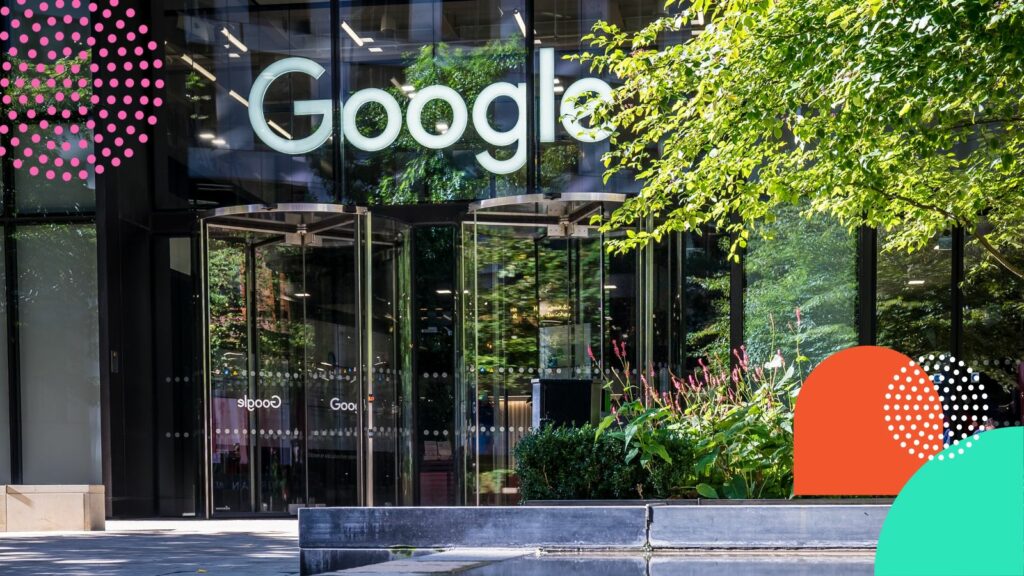What is Responsible AI?
In our recent blog post ‘Leveraging Machine Learning and AI in App Development’, we discussed how the development of AI has flung the doors wide open to increasingly personalised and valuable brand experiences.
AI presents a new land of opportunity where all industries, from healthcare to education, can improve people’s lives in incredible, innovative ways. But, as we all know, with great power comes great responsibility. And the deployment of AI is certainly no exception.
And despite its increasing adoption, there’s still a long way to go both in terms of how users perceive AI deployment and how businesses implement it.
- Only 35% of global consumers trust how AI is being implemented by organisations – 2022 Accenture report
- 52% of Americans say they feel more concerned than excited about the increased use of artificial intelligence – 2023 Pew Research Center survey
- Just a little over 20% of companies have risk policies in place for generative AI – 2023 McKinsey report
- 78% of UK customers express concerns about companies employing AI unethically – 2022 MyCustomer survey
Not only are businesses under immense pressure to embrace these new technologies and deliver more profoundly creative customer experiences than ever. But they must also tread very carefully to ensure regulatory and ethical compliance when they do so.
2023 has seen AI broaden the boundaries of creativity like never before. But 2024 will see us caveat that creativity with a strong focus on preventing bias perpetuation and the potential for human harm.
So, what is Responsible AI?
Responsible AI is a framework for developing and deploying AI systems that are ethical, trustworthy, and beneficial to society.
Key principles of Responsible AI.
- Fairness: AI systems should not discriminate or disadvantage individuals or groups of people based on their race, gender, ethnicity, sexual orientation, socioeconomic status, or other protected characteristics.
- Transparency: Developers and users should be able to understand how AI systems work and the data they use. AI systems should explain their reasoning and decisions in a way that is understandable to humans.
- Accountability: There should be clear processes for identifying and addressing unintended consequences and harms caused by AI systems. Individuals and organisations using AI should be held accountable for their actions.
- Privacy: AI systems should respect individuals’ privacy and protect their personal data. Data collection, storage, and use should be transparent and aligned with data protection regulations.
- Security: AI systems should be secure from cyberattacks and data breaches. They should be resilient to malicious attacks and protect against unauthorised access.
Companies like Google and Microsoft have made their Responsible AI practices and commitments readily available. It stands to reason that customers are far more likely to engage with AI systems that are proven to be fair, unbiased and accountable. Therefore, sharing these principles in a transparent way will significantly help to foster trust among your users and stakeholders. By clearly showcasing your Responsible AI commitments and case studies, you can build a reputation for responsible innovation and genuinely human-centred design.
Earlier this year, Apple hosted the Workshop on Machine Learning for Health. This two-day hybrid event brought together Apple, the academic research community and clinicians to discuss state-of-the-art machine learning research in healthcare. Topics explored fairness and robustness in data collection and model training to avoid homogenous datasets and improve generalisation across diverse populations.
By ensuring Responsible AI, you can harness the power of AI for positive impact while proactively protecting your business values and principles.
Best practices for Responsible AI.
- Ethical AI design: Consider ethical principles and potential biases from the outset of the AI development process.
- Diverse and inclusive data: Use diverse data sets to train AI systems that are representative of real-world populations.
- Bias detection and mitigation: Implement techniques to identify and mitigate biases in AI systems.
- Human-in-the-loop control: Ensure that humans are involved in the decision-making process, especially for critical decisions.
- Continuous monitoring and evaluation: Regularly monitor AI systems for unintended consequences and biases.

The methods and benefits behind Explainable AI.
Explainable AI (XAI) is, quite simply, the ability to explain the reasoning behind a system’s decisions.
By understanding this, we can ensure that AI systems’ transparency and accountability so that users can trust their decisions. This is particularly important when the system is used for critical decision-making or to significantly impact people’s lives.
There are several approaches to AI explainability, including:
- Local interpretability methods: These explain predictions made by a machine learning model rather than attempting to explain the model’s overall behaviour.
- Global interpretability methods: These provide insights into the overall behaviour of the entire machine learning model. This broader perspective offers valuable understanding of how the model functions and what drives its decisions across its entirety.
- Explainable models: These are designed to be more transparent and understandable than traditional models by using simpler algorithms or by incorporating additional information.
Not only can XAI techniques help build trust, but they can also be used to identify and mitigate potential risks and ensure that AI is used ethically and responsibly.
By explaining why an AI system made a particular decision, we can better decipher how it weighted different factors and arrived to its conclusion. This can help us to proactively identify possible biases or discriminatory decisions and take steps towards mitigating them in the future. Explaining the inner workings of AI in a way that’s fathomable to humans can help developers unearth limitations, debug its failings and improve outcomes.
As XAI techniques become more sophisticated, we’ll be able to comprehend and trust AI systems and harness this knowledge to create more responsible and intelligent results.
Balancing ethical AI and innovation.
A recent article in Time magazine argues that we don’t have to choose between ethical AI and innovation. The report suggests that by focusing too intently on the possible pitfalls, we could miss out on AI’s vast potential. In fact, Reshma Saujani states the benefits of AI outweigh its drawbacks.
From helping people with disabilities live their lives more independently to enabling engineers build resilient infrastructure and assisting the public sector with delivering policies and resources. Even supporting doctors with patient diagnosis and drug discovery. AI encompasses limitless opportunities for empowerment.
The article highlights several examples of AI applications that are both ethical and innovative. For example, AI-powered tools that can help reduce workplace discrimination and AI-powered systems that help improve healthcare.
But, along with the faith and fearlessness required to allow AI to solve some of the world’s biggest problems, an unprecedented level of customer-centricity will have to occur. To build tools that can be trusted to resolve decade long pain points, the people at the heart of those problems must be involved from the very beginning.
By using diverse data sets and ensuring that humans are an integral part of the decision-making process, we can create AI systems that are representative of real-world populations. Systems that mitigate biases and avoid the perpetuation of societal inequalities.
To balance ethical AI and innovation, we must:
- Embed ethical principles: Integrate ethical principles into AI development, emphasising fairness, transparency and accountability throughout the AI lifecycle.
- Promote accountability: Establish clear mechanisms for holding AI developers, users, and organisations accountable for AI-related harms.
- Enhance data governance: Implement robust data governance frameworks to protect personal data, prevent unauthorised access and ensure transparent data use and collection.
- Empower stakeholders: Foster open dialogue and collaboration among developers, policymakers and the public to address ethical concerns. Thus ensuring responsible AI development and deployment.
- Promote human-AI collaboration: Design meaningful AI systems that support user needs and compliment human capabilities, instead of replacing them.

Key goals of AI Safety.
As you might have guessed, AI safety focuses on preventing AI systems from causing harm. Whether that’s harming humans, causing accidents, or deliberate misuse for malicious purposes.
AI safety encompasses machine ethics and AI alignment, which aims to make AI systems both moral and beneficial to humans. AI safety also encompasses technical problems such as monitoring systems for risks and making them highly reliable.
The following are the key goals of AI safety:
Prevent AI from being used for malicious purposes.
As with any powerful technology, it’s only as good as its creator. Poorly designed or managed AI systems could be used to harm people, damage property, or disrupt critical infrastructure. It’s crucial to develop AI that’s secure and safeguarded against malicious misuse.
Ensure that AI is used fairly and equitably.
As we’ve explored – if not used responsibly – AI could perpetuate existing biases or even create new ones. Following the core principles of Responsible AI, it’s vital to develop AI systems that are fair and unbiased.
Protect humans from the unintended consequences of AI.
AI systems are becoming increasingly autonomous and powerful. By deploying Responsible AI best practices and XAI techniques, we can better understand how AI systems make decisions and why. Through this understanding, we can avoid biases, debug errors and build trust – ultimately developing safe AI that doesn’t threaten human safety or wellbeing. By ensuring human oversight and control in the critical decision-making process, we will maintain the ability to override or control the system if necessary.
Ensure that AI is aligned with human values.
It’s vital to develop AI systems aligned with human values that don’t cause harm or distress. By combining regular monitoring of AI systems for unintended consequences, biases or safety risks with proactive corrective action, we can ensure safe and ethical operation.
The following are some of the challenges that AI safety researchers are working towards:
- Explainability: AI systems are often complex and opaque, making it difficult to understand how they work and why they make their decisions. Hence, we must develop explainable AI systems that allow humans to understand their inner workings and hold them accountable for their decisions.
- Balancing safety and autonomy: To get the most from AI, we must build systems that are both safe and autonomous. However, it can be tricky to strike a balance between these two goals. If AI systems are too safe, they may be too inflexible and unable to adapt to changing circumstances. If AI systems are too autonomous, they may be more likely to make mistakes or cause harm.
- Long-term consequences: Instead of getting caught up in its immediate capabilities, we have to take a step back and consider the long-term implications of AI development. AI systems could profoundly impact society, so we need to think carefully about how to mitigate the potential risks of AI before they arise.
AI safety is a complex and challenging field, but it also contains enormous potential for human good.
By adopting responsible AI practices, ensuring AI explainability, promoting AI ethics, and prioritising AI safety, we can co-create immensely powerful and creative AI systems that greatly benefit humanity.
This blog post has provided a brief overview of several emerging topics in AI. For more information, please refer to the following resources:
- The Ethics and Governance of Artificial Intelligence: https://ai-ethics.org/
- AI Ethics Initiative: https://aiethicsinitiative.org/
- The Future of Life Institute: https://futureoflife.org/
To discuss how AI can be responsibly incorporated into your mobile or web app to better serve the needs of your users, get in touch or explore our bespoke AI packages.





